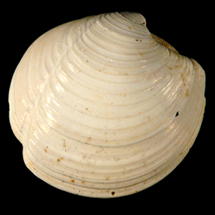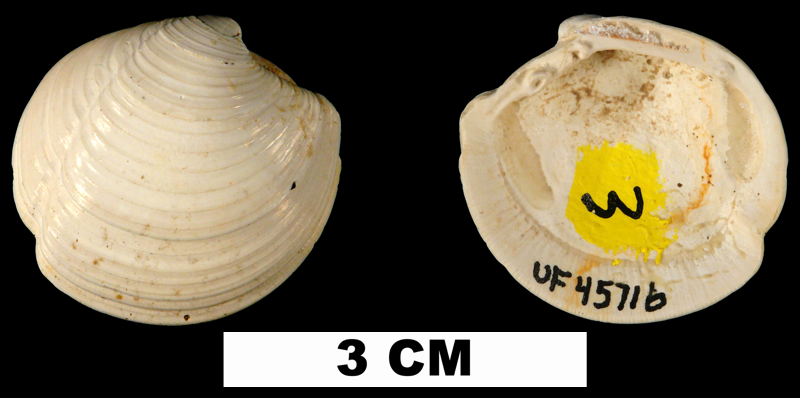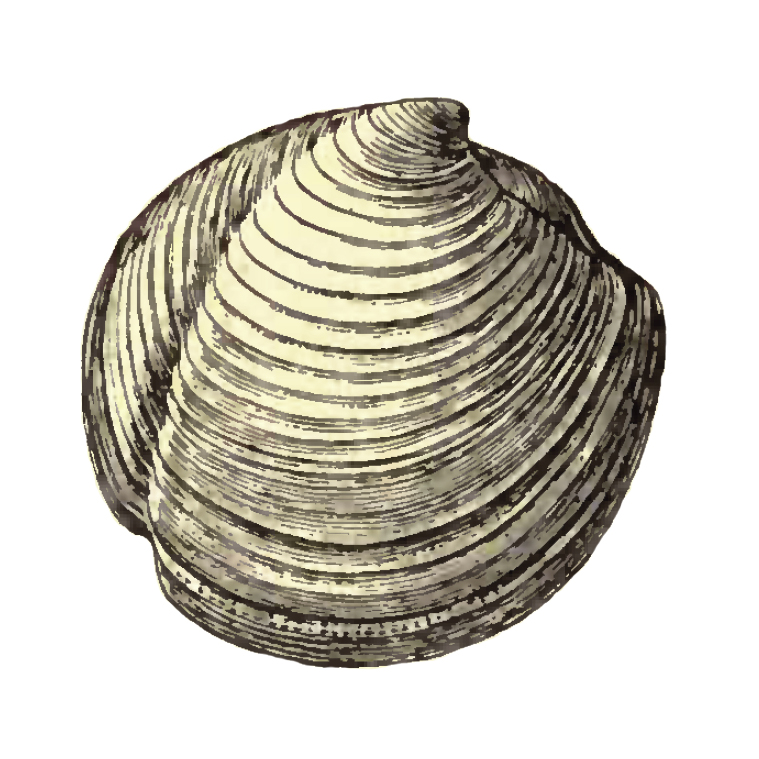
Lucina glenni

- Phylum: Mollusca
- Class: Bivalvia
- Order: Imparidentia
- Family: Lucinidae
- Genus: Lucina
- Species: Lucina glenni Dall, 1903
Geological Range
Early Miocene; Extinct.
Paleogeographic Distribution
Northern Florida.
Remarks
Original Description (from Dall, 1903, p. 1366):
"Oligocene of the Chipola beds on the Chipola River, and of the lower bed at Alum Bluff on the Chattahoochee River, Calhoun County, Florida; Burns and Ball.
Shell of moderate size and convexity, solid, polished, with small prosogyrate rather elevated beaks, rounded or subovate outline, and strongly marked dorsal areas; the young begin with a subrhomboidal shell, in which the projecting anterior and posterior ends recall P. cariniferus; the exterior is elegantly and rather closely concentrically rippled; the lunule is deep and cavernous, much more excavated in proportion than in the adult, and the dorsal areas are larger in proportion to the whole shell. In the course of growth the concentric sculpture becomes feebler and more distant, the strong, cord-like carina below the centrally convex anterior dorsal area becomes less conspicuous, and the outline of the valve changes to subovate, rather higher than long, and the lunule is so obscured by the gyrate beaks that it is no longer noticeable. An average specimen measures: alt. 32, Ion. 30, diam. 16 mm.
The margins are elegantly minutely crenulate. The shell is named in honor of Professor L. C. Glenn, who has done much work on the Tertiaries of Maryland and Virginia."
To access this description in its original formatting through Google Books, click here.
Stratigraphic Occurrences
- Early Miocene
- Chipola Formation (N. FL)


